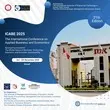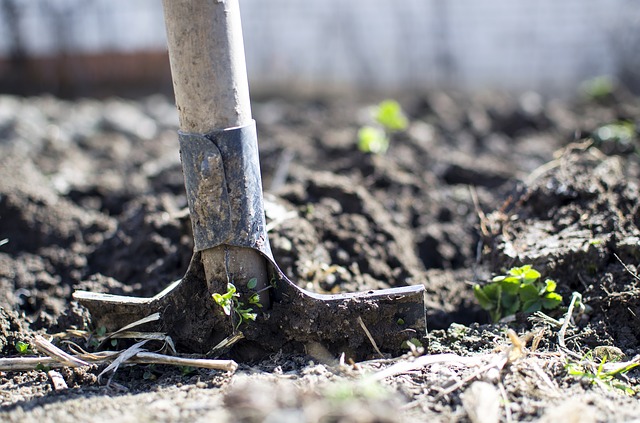
Fighting Hunger
How Engineers are Helping to Solve the Global Food Crisis
Read a summary using the INOMICS AI tool
The world is beset by intertwined crises: the climate, pandemic, and, increasingly, a crisis in the global food supply. It’s prosaic to say, but as the world’s population increases, more food is needed to sustain it. And regardless of the population size, humanity will only ever have the same amount of land on which to produce its food. This, as one may expect, is a growing tension. Luckily, engineers of all stripes are busy using their expertise, conjuring up innovative solutions to address the issue. Here we take a look at some of the most impressive.
Vertical farming
So, because the planet has a finite amount of land, we need to get the most yield out of what we have. One way of doing this is building upwards – building vertical farms. A vertical farm means that more food can be grown in the same amount of land because crops are being grown in layered structures. Obviously vertical farming is much different than conventional farming. It is heavily reliant on technology rather than natural elements like the Sun and wind, which means that if a vertical farm loses power there is a huge loss of production. Also, because some crops need much more light and water than a vertical farm can provide, only certain crops, such as lettuce, can be grown this way.
Unfortunately, vertical farming is not yet a sustainable way to produce food. Growing crops in large fields and in other conventional locations is still more affordable and accessible. That being said, with the work that engineers are doing, it is only a matter of time before vertical farming is a viable solution to help solve the global food crisis. Watch this space.
Suggested Opportunities
- Conferenza
- Posted 1 day ago
43rd RSEP International Multidisciplinary Conference
Between 15 Oct and 17 Oct in New York City, Stati Uniti
- Workshop, Conference
- (Hybrid)
- Posted 6 days ago
International Conference on Applied Business and Economics - ICABE 2025 - 21th Edition - A HYBRID CONFERENCE
Between 3 Nov and 5 Nov in Kuwait City, Kuwait
Biological inoculants
Besides coming up with new ways to grow crops, another angle engineers have taken to help solve the global food crisis is targeting the crops themselves. One such example is biological inoculants. These inoculants consist of bacteria, algae, or fungi that are applied to the crops or soil. They are used to mutually benefit both the crops they treat and the soil they grow in. For example, a fungus applied to a soybean plant strengthens its root system, allowing it to take in more nutrients. By doing so, less fertilizer and water is wasted, saving farmers money they can spend elsewhere.
 But that’s not all. They can also improve a crop’s yield, meaning that farmers can grow more food from fewer seeds. This is because they improve a plant’s stress tolerance, reducing the chances of the plant dying due to drought, flooding, or disease. Ultimately, not only do biological inoculants help to produce more crops, they make them stronger and more resilient.
But that’s not all. They can also improve a crop’s yield, meaning that farmers can grow more food from fewer seeds. This is because they improve a plant’s stress tolerance, reducing the chances of the plant dying due to drought, flooding, or disease. Ultimately, not only do biological inoculants help to produce more crops, they make them stronger and more resilient.
A further benefit of biological inoculants is that they are entirely organic. This characteristic means that farmers can start to reduce their use of chemical-based products, so there are fewer chemicals being added to the soil, water, and air. While microbiologists and other scientists helped to develop the inoculants, the world has engineers to thank for both scaling up the production process and cutting its costs. Thanks to engineers’ ingenuity, the world has more food to eat.
Research and development in space
In response to the dwindling resources on Earth, Humans are attempting to visit and build settlements on different celestial bodies like the Moon and on Mars. Naturally, if a settlement is eventually built, food will be needed to keep the settlement going. Sending food shipments to these faraway places is unsustainable, meaning researchers are trying to find ways to grow food on these settlements, and make them self-sustaining.
Unfortunately, a self-sustaining settlement in space is a long way off. There are many challenges to growing food in space, including water, energy, and nutrients. That has not put engineers off the challenge. The Advanced Plant Habitat aboard the International Space Station, for example, is a growth chamber used to test which growth conditions plants prefer in space. Engineers were needed to ensure that this system held up and they designed key features, such as the carbon dioxide scrubber that removes carbon dioxide from the chamber.
The lessons learned from this research and development can be applied on Earth as well. Growing food in space is all about efficiency, meaning that if we master growing food in space, our ability to grow food more efficiently on Earth will be greatly increased. It sounds mad, but its true.
Mastering resource management
The world has a finite amount of resources. Once they’re used up, they’re gone. That means that we must make the most of them while we can. Water is one of those resources. The more water that is wasted, the less food that can be grown. Engineers, though, are on hand, and have begun working to minimise water wastage by designing effective water management and irrigation systems. If these systems can be optimized, most of the water used for irrigation will be used rather than wasted. This optimization is particularly important in areas with limited water resources that are already suffering from desertification.
Engineers can also help by minimizing the amount of food waste that is produced. This could mean, for example, designing containers that slow the rate at which food spoils, or improving roads and railways so that food can get from fields to people’s mouths more quickly. When it comes to mastering resource management in terms of the global food crisis, engineers have a lot to offer.
Bottom line
Engineers are using their expertise to tackle the global food crisis in a number of ways. Whether coming up with new technologies to make food easier to grow, designing infrastructure to limit waste, or doing research to find ways to make growing food more effective, engineers have a big hand in dealing with the global food crisis. As the global population grows and the problem worsens, we will need to lean more on engineers to be even more innovative.










